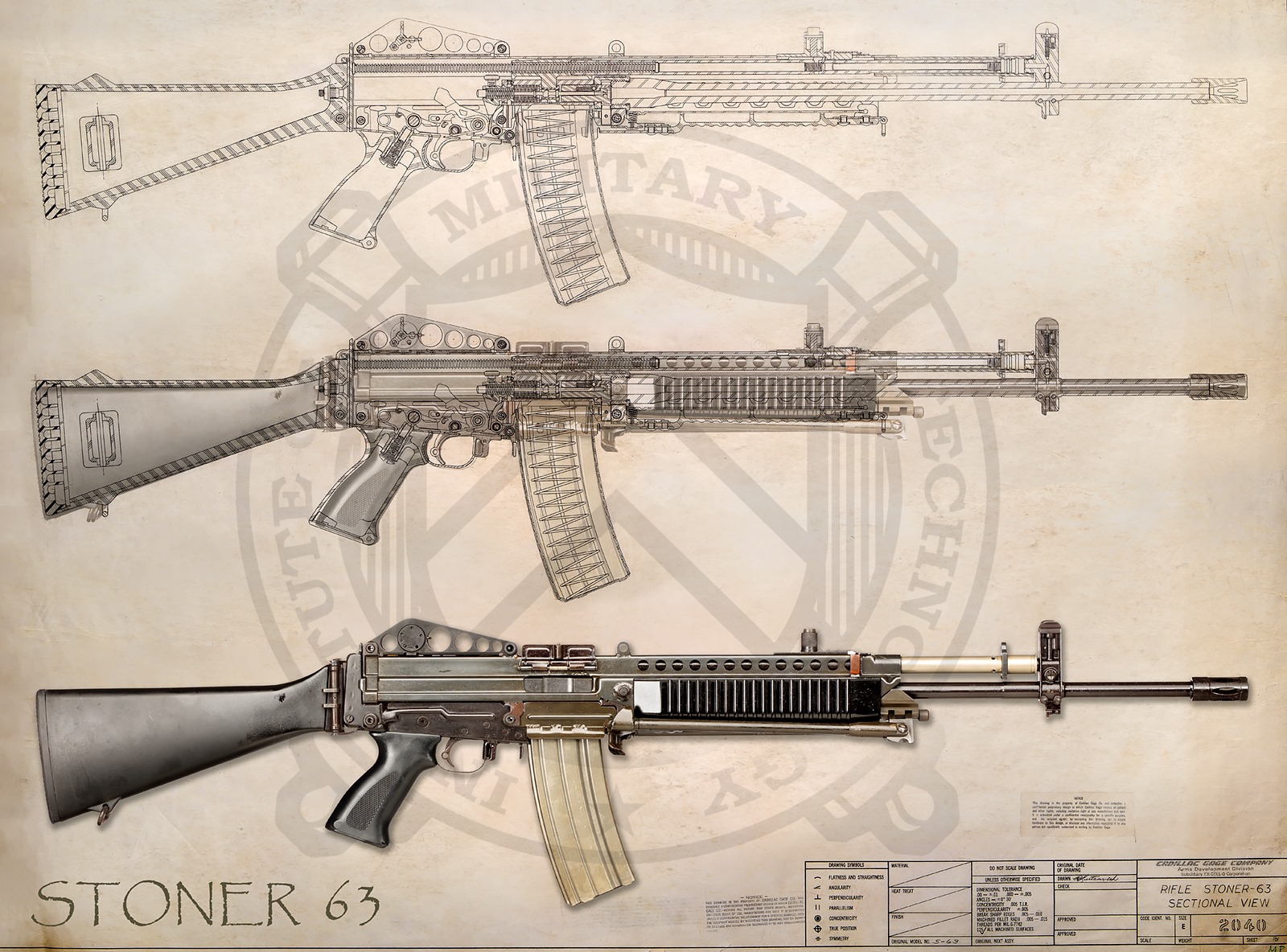The term ‘weapon system’ is often overused and misapplied these days, but in the case of the famous Stoner 63, it is totally applicable.
Soon after leaving ArmaLite, Eugene Stoner devised a concept for a weapons platform built around a common receiver and interchangeable components that could be configured as a rifle, carbine and several machine gun configurations by simply fitting the appropriate parts to the basic assembly. He even initially designated the concept the M69W because that designation looks the same upside down as it does right side up – reflecting the invertible receiver at the heart of the system.
The Stoner 63 was produced in several configurations:
- Rifle
- Carbine
- Automatic Rifle
- Light Machine Gun
- Medium Machine Gun
- Fixed Machine Gun
- ‘Commando’ LMG
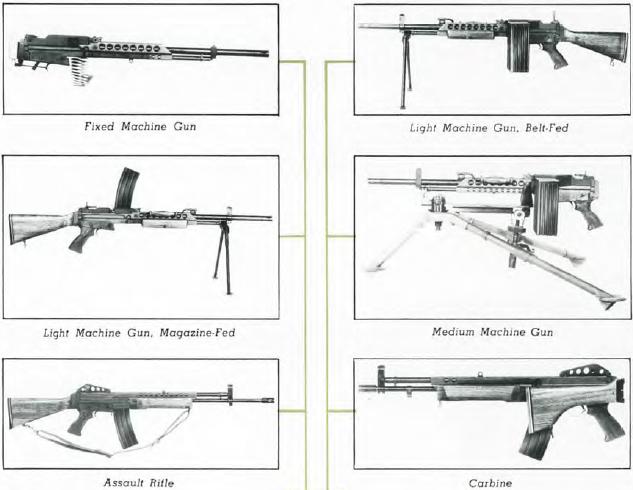
Illustration of the full Stoner 63 family of weapons from Stoner 63 sales brochure (hat tip to ForgottenWeapons.com)
My own interest in the Stoner 63 system started in the latter half of the 1970’s as a teen-ager – when I discovered a lengthy article about the Stoner 63 family in an old copy of the Feb. 1965 issue of Popular Mechanics in a box in my step-father’s attic. I still remember sitting up there one sweltering hot summer afternoon reading the article from start to finish by the light of a single low-watt light bulb dangling from the rafters. There’s something about the Stoner 63 that just grabs you like that…
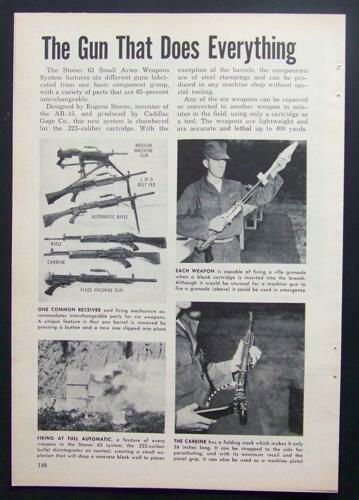
On March 4, 1963, the Department of Defense’s Advanced Research Projects Agency made the first purchase of the Stoner 63, ordering 25 units in various configurations. In August and September 1963, the Stoner 63 was sent to the Marines Corps Landing Force Development Center at Quantico for evaluation, where it made a positive impression with its light weight and high ammunition capacity – with the Marines apparently favoring the rifle and light machine gun configurations.

A rare early serial numbered Cadillac Gage produced Stoner 63 Rifle used the US Marine Corps in Vietnam. Photo credit: morphyauctions.com
Trials were also performed by the Army Materiel Command at their own test facilities. However, the Army’s findings were not so favorable and after several months of testing the Stoner 63 system was deemed to be unacceptable for service use. The Stoner 63 was undeniably a complex system, but many feel that the Army’s testing parameters were deliberately stacked against the Stoner system. For example, the weapon was expected to perform with a wide variety of ammunition types and an extremely wide range of port pressures, which left very little power reserve with some ammunition. For instance, the tracer ammunition reportedly used in the Stoner 63 tests was of such low pressure that it also failed to function reliably in the M16.
Nonetheless, Stoner made a number of improvements to the design and these upgrades resulted in the Stoner 63A, which began production in 1966. The most famous users of Stoner 63 / 63A weapons were the US Navy SEALS in Vietnam; however, in 1967, the Stoner 63A system was also field tested by Company L (Lima Company), 3rd Battalion, 1st Marine Regiment, 1st Marine Division. Riflemen were issued the weapon in the Rifle configuration, while officers and certain other personnel received the Carbine. The Automatic Rifle configuration was deployed on a limited basis in the squad automatic role, while Lima’s weapons platoon received both the LMG and MMG configurations.
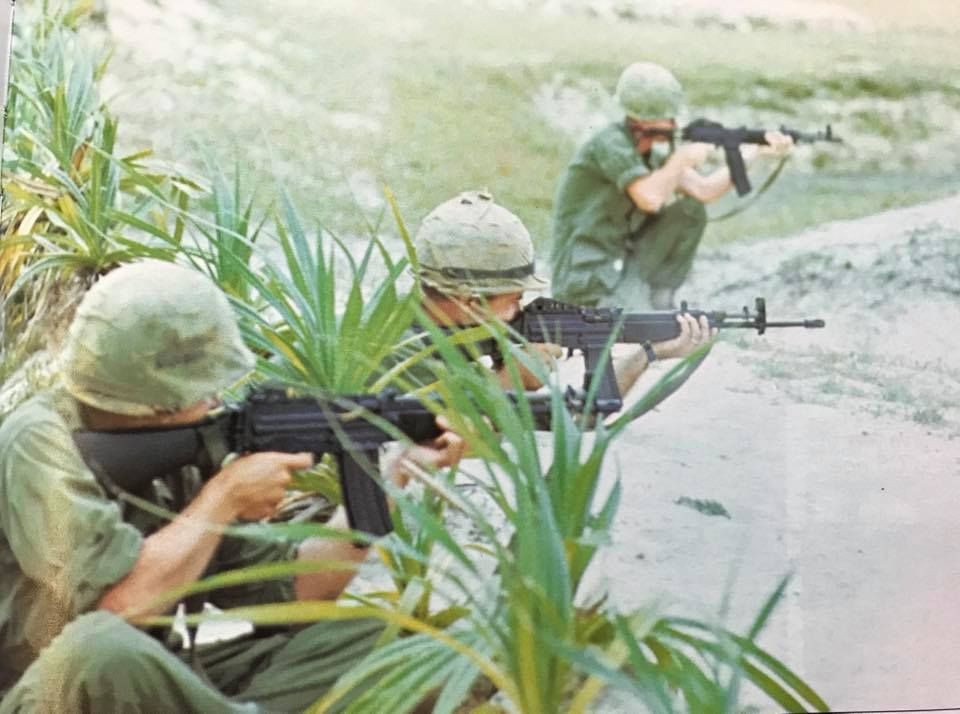
Marines testing the Stoner 63 rifle configuration on the DMZ in 1967. Allegedly nicknamed the “Johnny 7″ (after a popular toy gun that could transform into seven different weapons), the Stoner proved too complicated for wide issue and only saw service in the SAW-configuration with the Navy SEALs and Marine Force Recon. Photo credit: US Marine Corps
In 1967, Dutch firm NWM (Nederlandsche Wapen-en Munitiefabriek) De Kruithoorn N.V. of ‘s-Hertogenbosch acquired licensing rights to manufacture and sell the weapon worldwide with the exception of the United States, Canada and Mexico. But although NWM assembled several prototypes, the company failed to secure any export customers and the weapon was withdrawn. Its hard for us to know what led Stoner and co. to the decision to license the worldwide rights for the weapon system to a Dutch company – after all The Netherlands doesn’t exactly have a reputation as a global arms exporter, and especially not for small arms.
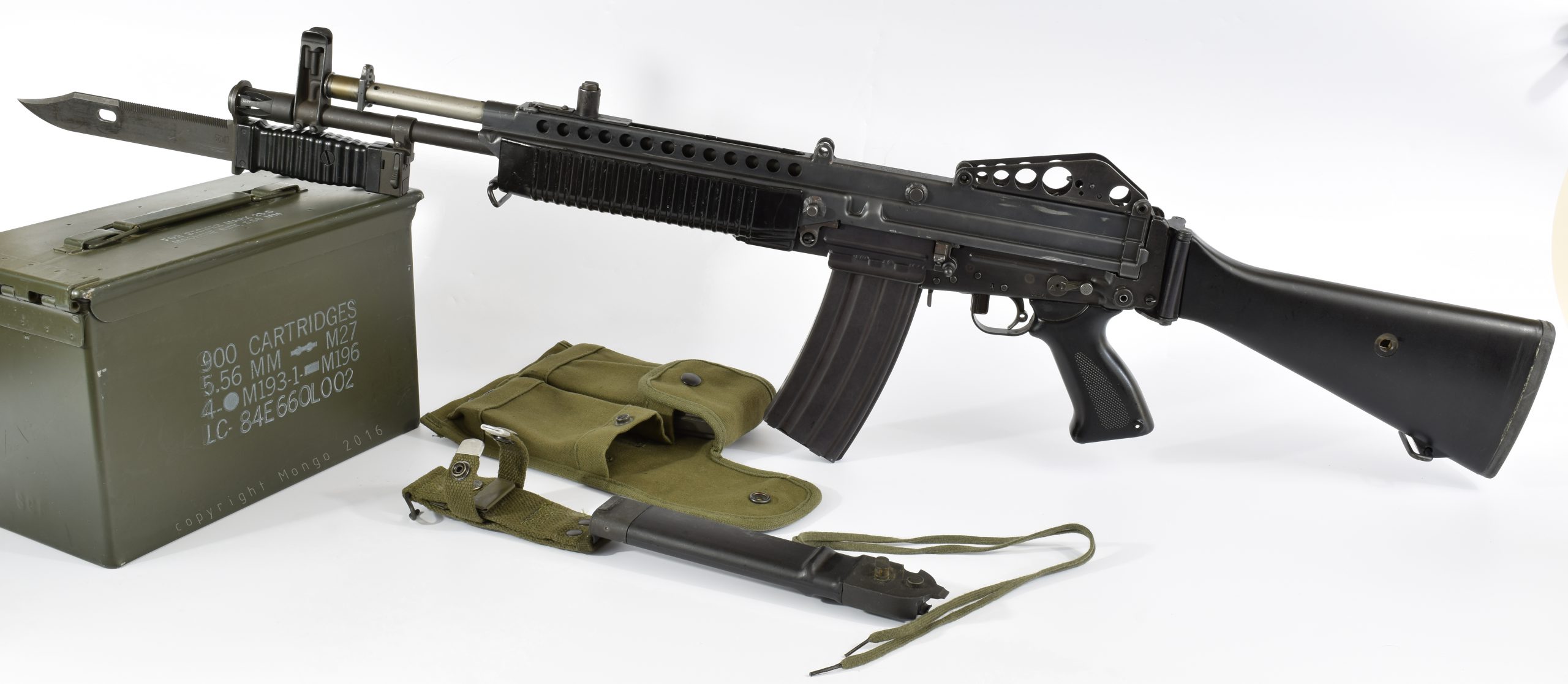
Cadillac-Gage manufactured Stoner 63A Carbine with Dutch KCB-70 bayonet and scabbard and double magazine pouch. Photo credit: weaponblueprints.com
In 1970, the U.S. Army designated the light machine gun configuration XM207 and issued it to select Army Special Forces units for evaluation. However, due to its complexity and high maintenance requirements, the design was rejected, and the project was dropped in 1971. Also in 1971, Cadillac Gage ceased all production of the Stoner 63. Around 4,000 63 and 63A units were built in total.
The Navy SEALs continued to use the Stoner 63 and had officially adopted the Commando version as the Mark 23 Mod 0 machine gun, but by the late 1980s the Stoner 63 was completely phased out in favor of the new M249 SAW, and most of the remaining Stoners were destroyed.
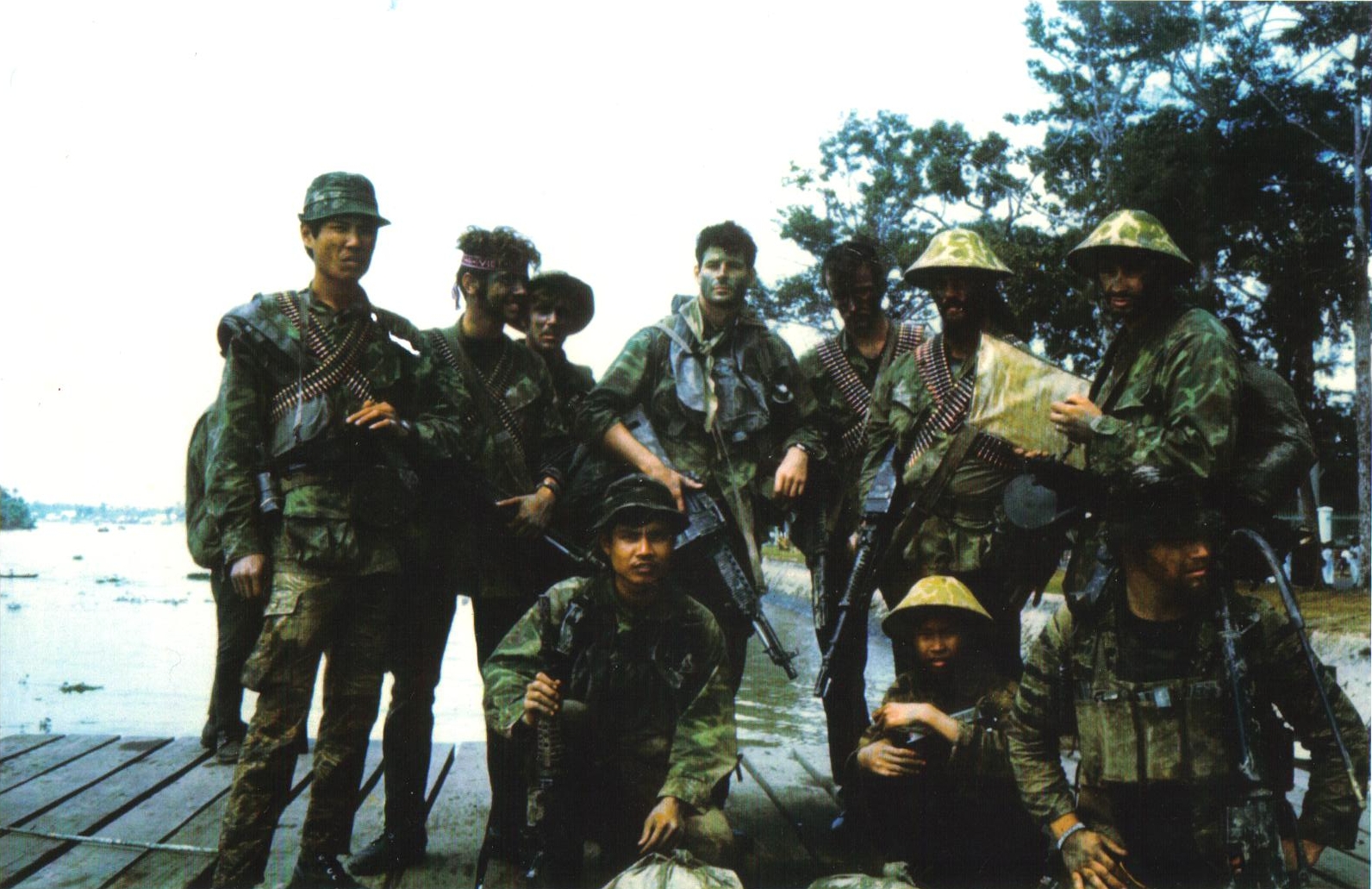
Navy SEALS X-Ray Platoon. Taken on a dock near Ben Tre in Southeast Vietnam. The SEAL in the center of the group, Lt. Michael Collins, is carrying a Stoner 63A1 Mk 23 Mod 0 Commando with a short 15.7 in (398.8 mm) barrel. Lt. Michael Collins, KIA March 4th, 1971. Photo credit: US Navy.
The Stoner 63’s Legacy
Although the Stoner 63 came close to being adopted by the USMC and was highly prized by the US Navy SEALS, it never achieved wide-spread use, nor was it ever adopted by any country. Ultimately, it was probably too complex for all but the most skilled and diligent operators, and it probably also suffered from insufficient marketing and sales support as well. It was also competing with the M16 which was very much the shiny new big thing at the time.
Nonetheless certain elements of the Stoner 63 lived on as influences in other designs – such as Stoner’s AR18 / AR180. The 63’s concept of a modular, common weapon system has also no doubt influenced other platforms such as the M16, the Negev, and the SCAR – although no other small arms system since has entailed the wide range of role adaptations that the Stoner 63 was capable of. The most recent descendant of this line is the Light Assault Machine Gun produced by Knight’s Armament Company – see below.
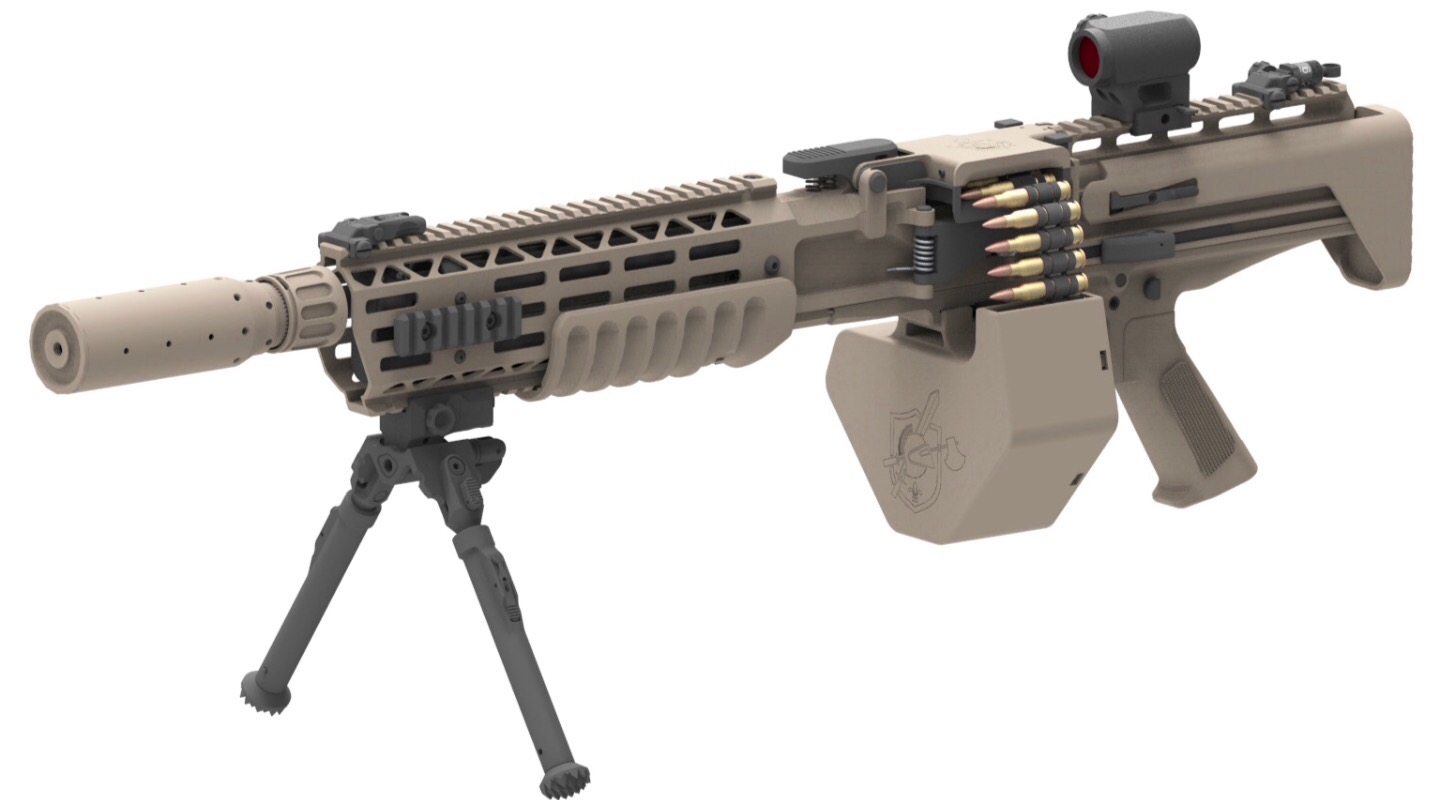
Robinson Armament Co. also developed and manufactured the semi-automatic M96 Expeditionary Weapon System in the early part of the 2000’s. Although it was technically different in some ways, the M96 was based on the Stoner 63 design and delivered several of its unique features.


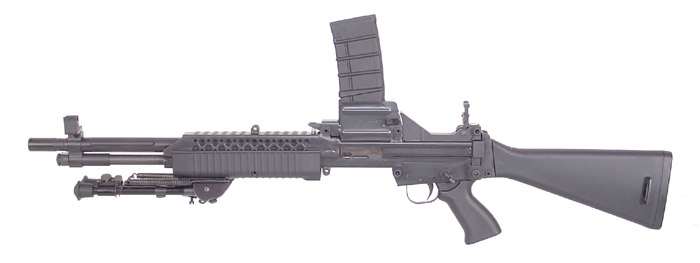
The Robinson Arms M96 was produced in rifle, carbine, and “Bren-gun” configurations.
The truest legacy of the Stoner 63 however is probably as an intriguing historical what-if/might-have-been and as a fascinating object of interest for firearms enthusiasts. For an excellent recent example of this, check out the video from Larry Vickers below:
And finally, if you just can’t get enough Stoner, here’s a nice wallpaper for you:
